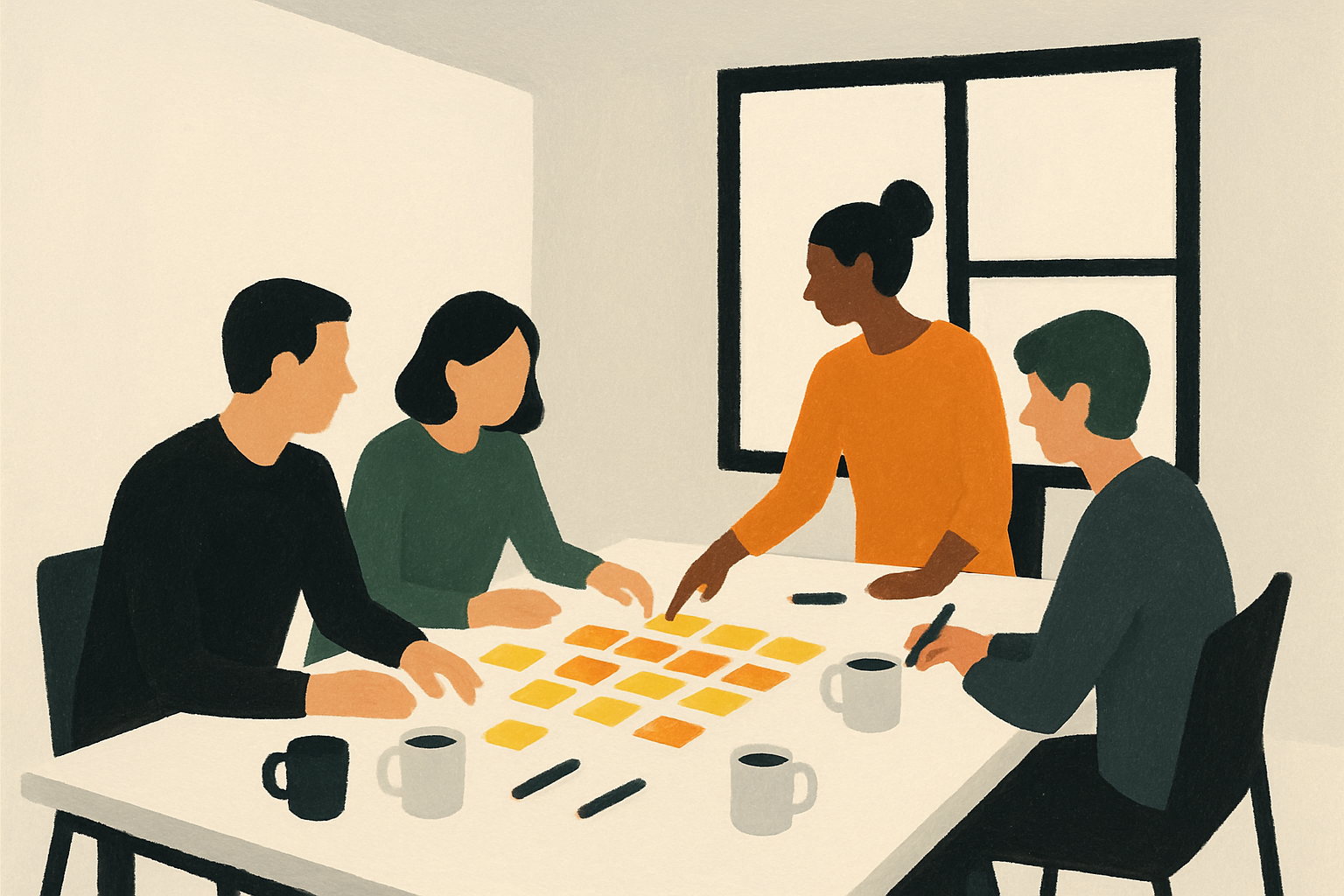A scenario planning workshop is a structured session designed to explore how the future might unfold and what different outcomes could mean for an organization. It enables teams to move beyond forecasting and embrace uncertainty as a tool for strategic insight. Facilitating such a workshop effectively helps translate foresight into actionable strategy.
Step 1: Define the purpose and scope
Start by clarifying the goal of the workshop. Is the focus on exploring long-term industry shifts, innovation opportunities, or potential disruptions? Define the time horizon and the key question the scenarios will address. Clear objectives help participants stay aligned and ensure discussions remain purposeful.
Step 2: Identify key drivers and uncertainties
Encourage participants to brainstorm forces shaping the future – social, technological, economic, environmental, and political. Prioritize the drivers that have both high impact and high uncertainty. Visualize these as a matrix or map to identify where the greatest unknowns lie. This step builds the foundation for distinct and meaningful scenarios.
Step 3: Develop scenario frameworks
Use the most critical uncertainties to create scenario “logics” – contrasting combinations of how the future might evolve. Each scenario should describe a plausible world, not a prediction. Give each scenario a descriptive name and a short narrative that captures its essence.
If the organization already maps drivers and weak signals in a foresight platform such as FIBRES, this step becomes faster and more structured. The pre-collected drivers can be used as a starting point for selecting relevant uncertainties and building coherent scenario frameworks.
Step 4: Explore implications and strategies
Guide the group to consider what each scenario means for their organization. What risks or opportunities emerge? How might strategy, products, or operations need to adapt? This reflection turns foresight into actionable intelligence and stimulates creative thinking across functions.
Step 5: Synthesize outcomes and next steps
Conclude by summarizing key insights, common themes, and potential strategic moves. Document the scenarios and share them broadly within the organization. Capturing these outcomes in FIBRES, together with the linked drivers and supporting phenomena, creates a structured and accessible record of the work. This ensures that scenarios stay connected to the broader foresight landscape and continue to inform future decisions.
Bringing it all together
The true value of a scenario planning workshop lies in how it informs ongoing strategy work and inspires continuous foresight. When teams can visualize multiple plausible futures, they build the confidence to act proactively rather than reactively.
Once the scenario planning workshop ends, enthusiasm can quickly fade if the insights are not brought into everyday use. To make the most of the momentum and ensure the insights stay alive long after the session ends, explore how to keep scenario planning alive after the workshop.


